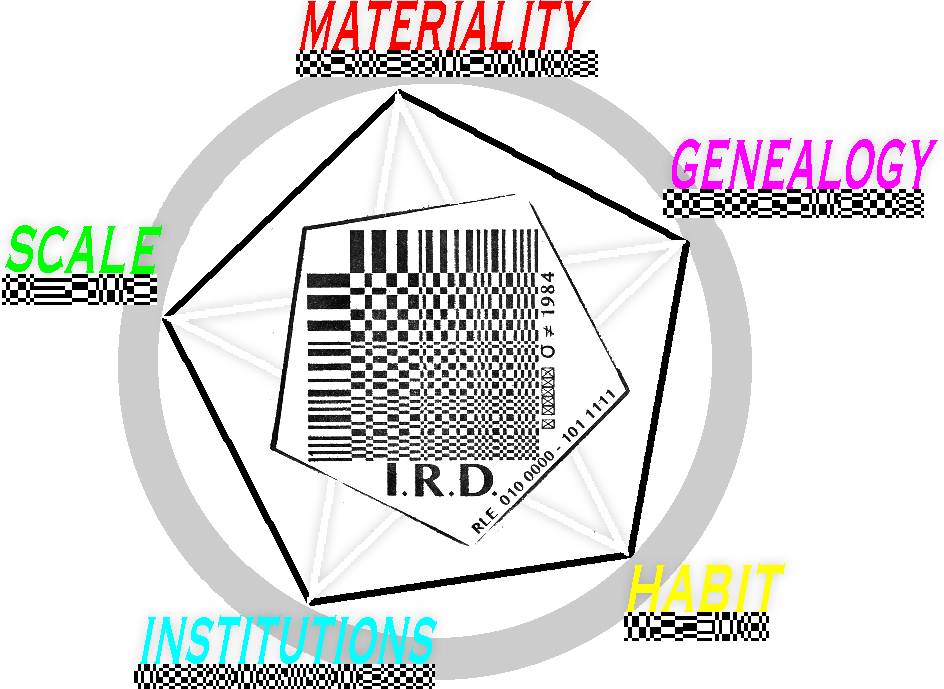In 2014 Ted Davis invited me to give a talk in Basel, at the FHNW, in a series called The New and the Newer Media. Although very happy with the invitation, I had a hard time wrapping my head around this topic, because I am not sure what 'new' means. I think it has everything to do with the scaling of time, which is an interesting problem, but also a difficult one. Besides that, after studying media for 15 years, I have read as many definitions of media as I have read books... How could I ever talk about the new(er) media? It feels a double monster challenge rapped up in one small sentence.
Opening up the 2001 staple, The Language of New Media by Lev Manovich, felt like one starting point. Manovich attributes a list of 5 formalistic qualifications, which characterise the new media (of 2001). According to him they are numeric, modular and automated. Besides that, new media work with variables and can use transcoding principles.
In The Interface Effect (2007), Galloway criticizes Manovich for only using formal qualifications, derived from the context of cinema, rather than positioning and analyzing new media in a social or historical context - beyond the cinematical -, which makes, according to Galloway, Manovich description of new media modernist and a-political (there are no issues of sha#ff33cc human concern at stake).
Galloway explains that new media can also be described in terms of social interaction, hardware and software, or networked information. Besides this, Galloway writes about the role of the interface and the interface effect (on our information) as a key issue in theorising new media. Interfaces mediate the thresholds and are not simply autonomous objects; they effect all information and engende#ff33cc by larger forces, transform the material state of information.
Galloway writes:
Opening up the 2001 staple, The Language of New Media by Lev Manovich, felt like one starting point. Manovich attributes a list of 5 formalistic qualifications, which characterise the new media (of 2001). According to him they are numeric, modular and automated. Besides that, new media work with variables and can use transcoding principles.
In The Interface Effect (2007), Galloway criticizes Manovich for only using formal qualifications, derived from the context of cinema, rather than positioning and analyzing new media in a social or historical context - beyond the cinematical -, which makes, according to Galloway, Manovich description of new media modernist and a-political (there are no issues of sha#ff33cc human concern at stake).
Galloway explains that new media can also be described in terms of social interaction, hardware and software, or networked information. Besides this, Galloway writes about the role of the interface and the interface effect (on our information) as a key issue in theorising new media. Interfaces mediate the thresholds and are not simply autonomous objects; they effect all information and engende#ff33cc by larger forces, transform the material state of information.
Galloway writes:
"the truth of social life as a whole is increasingly incompatible with its own expression. Culture emerges from this incompatibility. The same goes for the interface : it emerges from this incompatibility; it is this incompatibility."
Incompatibility resides at the momentum of progress. Incompatibilities are where the potentialities, power and future leaks into the crevices of the not - or never - implemented but also into the newer futures. If the new media are (partially) defined by the effects of the interface, the newer media should be sought out in the incompatibilities and not implemented resolutions.
This is what I illustrated during my talk at FHNW, in a Powerpoint exported as a JPEG slideshow, loaded and animated in Modul8, controlled by Midi and Syphoned as textures into a 3D Unity environment. The video above is a render of me navigating the beginning slide of my powerpoint in 3D, presented back then in Basel.



No comments:
Post a Comment